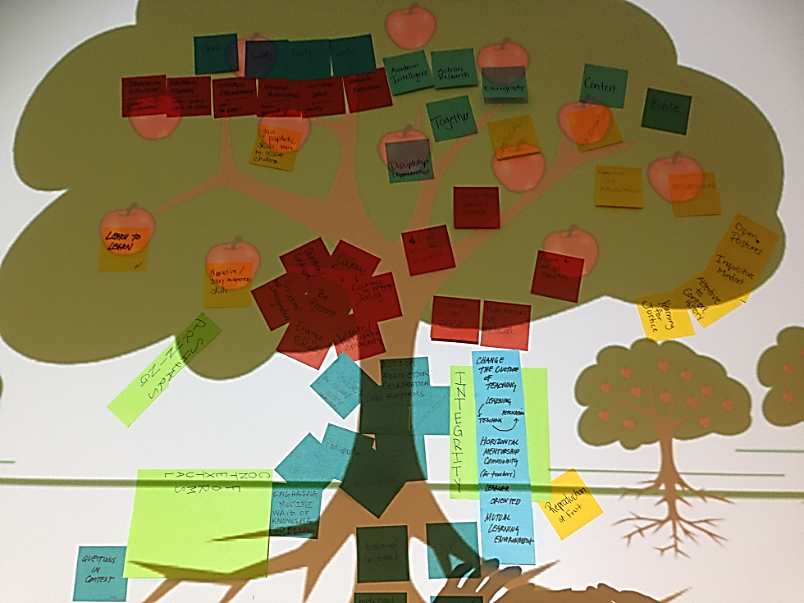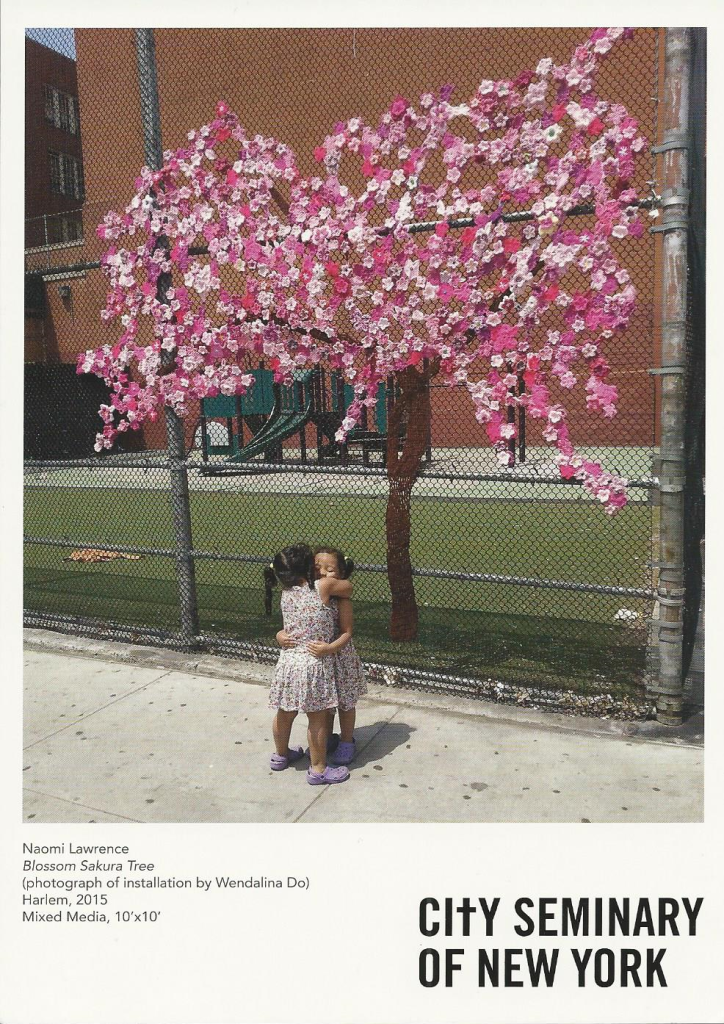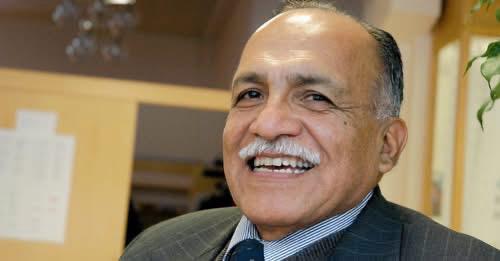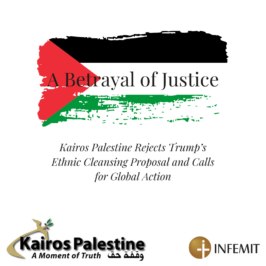What would a Master’s program that seeks the Peace of the City while building on diverse perspectives, global resources, and interdisciplinary methods look like? This question brought together scholars and practitioners from three institutions last month for a three-day working consultation. Representatives from INFEMIT (International Fellowship of Mission as Transformation), CETI (Centro de Estudios Teológicos Interdisciplinarios), and CSNY (City Seminary of New York) met at City Seminary’s campus in Harlem, NYC to discuss experiences and new possibilities in theological education.
Our discussion was bracketed by trees. Participants in the consultation shared a powerful moment when we gazed at an art piece created for City Seminary’s Who is my Neighbor? exhibition.
The blossoms on the tree were hand crocheted, attached to bring life, beauty, and color to an inner-city fence. The artist continually creates floral pieces like this one to hang on city fences until they are taken down, washed, and installed in a new neighborhood.
This is the picture of a neighbor.
One look at the photo reminded each of us that learning comes as much through our creativity, our community, and our daily actions as through books and lectures. This is educating for life, theology for Christian community.
Our consultation explored different educational models and practices such as this one through the experiences of City Seminary and CETI. City Seminary explained their “Practices Project,” a multi-year research project which studies the practices of urban Christianity in multiple global cities. We explored our own experiences in Christian ministry practices through small group discussions, and we brought our discoveries together to create a picture of flourishing ministry. Referring to historical-theological readings, we discussed how Biblical urban churches can inform our understanding and practice of Christian life today.
CETI also explained their educational model – which combines online and face-to-face aspects while students study theology through the categories of Church, Family, Work, and Society. We participated in CETI assignments through simulations of online response forums and participative community-based interviews. CETI members led us through questions on the roles of teacher/facilitators and the process of learning. Their example provided a vision for life-centered learning and learning-centered life.
Both of these models provided the backdrop for our final day in conversation, facilitated by INFEMIT team members. We entered this conversation through an activity: building our own theological formation tree.
 Through the images of ecosystem, soil, roots, trunk, branches, and fruit, we began to discuss the goals and ingredients of our desired Master’s program. Some themes that emerged were:
Through the images of ecosystem, soil, roots, trunk, branches, and fruit, we began to discuss the goals and ingredients of our desired Master’s program. Some themes that emerged were:
- Ecosystem: the ultimate purpose is the building of the church.
- Soil: this education is planted in specific contexts, histories, and lived experiences.
- Trunk: essential that our learning process mirrors our goals by being reflective, ongoing, non-hierarchical, interdisciplinary, participative, and communal.
- Branches: our curriculum should draw from global resources, frame subjects through life/action, and aim for discipleship.
- Fruit: equip people who will engage, collaborate, challenge, learn continually, seek peace and justice, reimagine, and love God and one another.
As the consultation concluded, we shared our ideas for next steps toward such a program. One idea proposed was a peripatetic model with itinerant faculty working in partnership with local facilitators to bring this program to various contexts while fostering action and reflection in community. Added was the idea that a common pot of funds could help subsidize expenses for students from the developing world so that they could benefit from cross-context exposure as well. We began to discuss curricular ideas and how traditional categories (like hermeneutics) can be woven, grid-like, into categories of life (like church, family, work, and society). We also discussed other networks, organizations, and institutions who might help in the formation, promotion, and execution of such a project.
A continuation committee was discussed and nominated in order to facilitate further conversation. However, we do proceed with the caution not to move too hastily, so that we may solidify our goals and fully define the outcomes we desire and the students we seek to serve.
We were extremely grateful to have this opportunity to meet and discuss a project which emanates from the dreams and initiatives of theological educators in the developing and developed worlds over the past few generations. The seeds that were once planted have grown into trees. Today, we hope to draw from their diverse beauty and their various adaptations to create a program that brings together Christian learning and practices from all over our world… for the Peace of the City.






